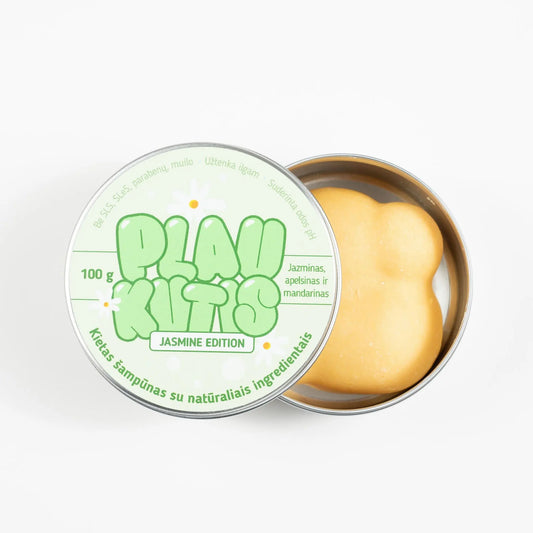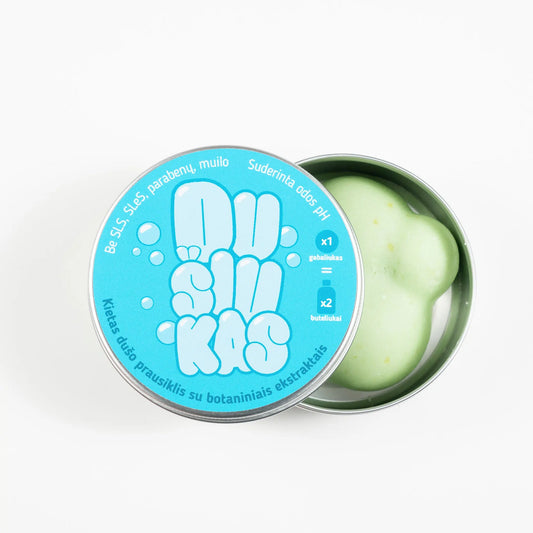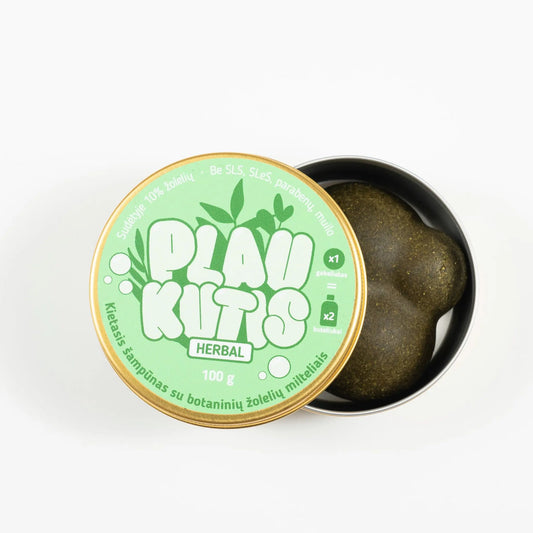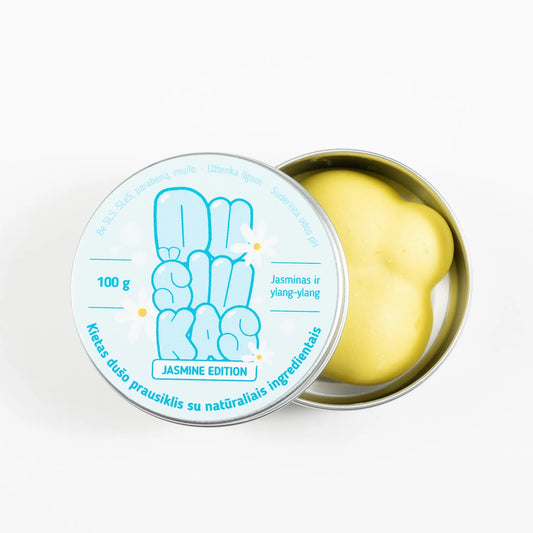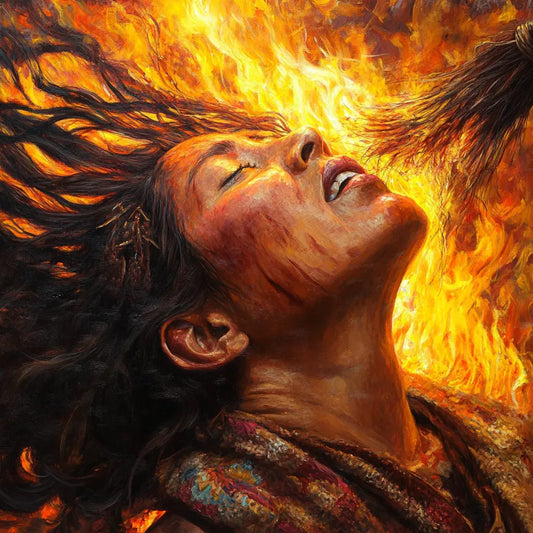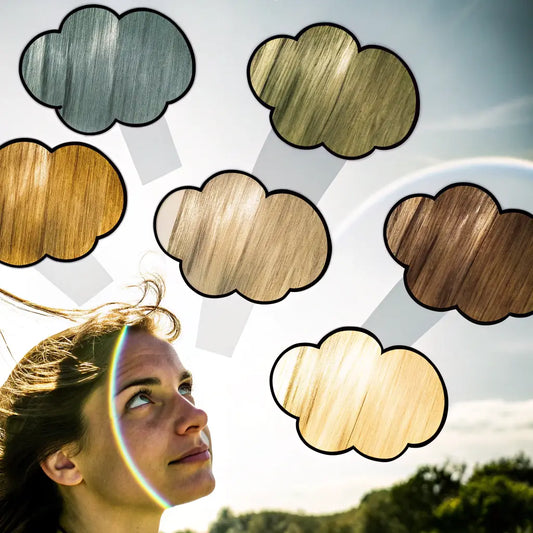Did you know that iron deficiency is one of the leading causes of hair loss in women? Most of us experience hair thinning or loss at some point in our lives, but few realize how it may be related to iron levels in the body. Iron deficiency, especially iron deficiency anemia, can greatly affect the hair growth cycle, causing noticeable hair loss.
Iron is essential for the production of hemoglobin, a protein found in red blood cells that carries oxygen throughout the body. When your iron levels are low, hair follicles don't get enough oxygen to thrive. This lack of oxygen affects the hair growth cycle, causing hair to shed more, grow back more slowly, and become thinner overall. Understanding how iron affects hair health can be the first step toward restoring fuller, stronger hair.
Anemia affects 1.62 billion people worldwide, with iron deficiency being the leading cause. According to the World Health Organization, iron deficiency affects more than 30% of the world’s population, making it the most common nutritional deficiency. The situation is even more concerning for women—up to 50% of women of reproductive age are iron deficient. This shows how common this problem is and why it deserves more attention, especially when it comes to hair health.

Understanding iron deficiency anemia
Iron deficiency anemia and hair health
Iron deficiency anemia is a condition where your body doesn’t have enough iron to make enough hemoglobin. Hemoglobin carries oxygen in your blood, and without it, vital organs and tissues suffer, including your hair follicles. When your body prioritizes oxygen delivery to vital organs, your hair follicles are often left without the resources they need. This means your hair doesn’t get the nutrients it needs, making it weaker, thinner, and more prone to falling out.
A study published in The Journal of Korean Medical Science found that women with lower levels of ferritin (a protein that stores iron) were more likely to experience hair loss than those with adequate iron levels. Ferritin levels below 30 ng/mL are often associated with hair loss, while optimal levels for hair health are generally considered to be above 70 ng/mL. Therefore, it is important to monitor your iron intake, as it directly affects hair health.
Iron deficiency anemia is more common in women, especially those who are experiencing heavy periods or are pregnant. These conditions increase the body's need for iron, and without adequate intake, you can experience symptoms like fatigue, pale skin, and, of course, hair loss. Interestingly, a study in The American Journal of Clinical Nutrition found that women with ferritin levels below 40 ng/mL were much more likely to experience diffuse hair loss than those with higher ferritin levels. This shows how important it is to maintain adequate iron levels to prevent hair loss.

Difference between mild deficiency and anemia
It's important to distinguish between mild iron deficiency and full-blown iron deficiency anemia, as both can affect your hair differently. Mild iron deficiency occurs when the body has low iron stores but has not yet affected hemoglobin production. At this stage, you may notice some hair thinning or loss of shine, but the symptoms are often subtle.
Iron deficiency anemia, on the other hand, occurs when iron levels are so low that hemoglobin production is impaired. This is when more significant symptoms occur, including severe hair loss, fatigue, and brittle nails. Hair loss due to iron deficiency anemia is usually more widespread—a condition called diffuse alopecia—rather than patchy hair loss. This type of hair loss can make your hair less dense, affect your confidence, and make it difficult to style your hair.
According to research published in The British Journal of Dermatology , women with anemia are almost twice as likely to experience hair loss as those without anemia. That’s why it’s important to identify iron deficiency early, before it progresses to full-blown anemia. Mild iron deficiency can often be corrected with dietary changes, while iron deficiency anemia may require supplementation under the supervision of a doctor. The sooner you identify the problem, the sooner you can start improving your hair health.

Iron Deficiency Symptoms: Hair Loss and More
Diffuse hair loss due to iron deficiency
One of the most obvious signs of iron deficiency is diffuse hair loss. This means that instead of losing hair in patches, you will notice an overall decrease in hair density. Your hairline may become thinner, or you may notice more hair loss when you wash or comb your hair. Unlike conditions that cause patchy hair loss, iron deficiency affects the entire scalp. This can be particularly frustrating because it is less obvious and harder to notice until a significant amount of hair is lost.
A survey published in The International Journal of Trichology found that nearly 60% of women experiencing diffuse hair loss had low iron levels, highlighting the strong link between iron and hair health. The effects of iron deficiency on hair are gradual, so it can be difficult to detect until hair loss becomes noticeable. If you notice more hair than usual on your brush or pillow, it’s worth checking your iron levels.

Other symptoms to look out for
Iron deficiency affects not only your hair, but your entire body. In addition to hair loss, you may experience the following symptoms:
- Fatigue : Feeling tired all the time, even after a full night's sleep. Fatigue is one of the most common symptoms of iron deficiency. In fact, a report from The National Institutes of Health shows that nearly 80% of people with iron deficiency experience fatigue.
- Pale skin : Iron deficiency affects the blood's ability to carry oxygen, causing the skin to become pale. This is often seen on the face, inside the eyelids, or on the gums.
- Weakness : Low iron levels can cause weakness and make it difficult for you to do the physical activities you normally enjoy. You may find that activities like climbing stairs or carrying bags become more difficult.
- Brittle nails : Just like your hair, your nails need nutrients to be strong. Low iron levels can cause nails to break or split easily. In severe cases, you may notice spoon-shaped nails (koilonychia), which is a classic sign of iron deficiency.
- Restless legs syndrome : Some people with low iron levels experience an uncomfortable sensation in their legs, often described as an urge to move them, especially at night. This can make it difficult to get a good night's sleep. Johns Hopkins Medicine reports that restless legs syndrome affects up to 25% of people with iron deficiency.
Iron deficiency is particularly common in women due to menstruation, pregnancy and breastfeeding, all of which increase the body's need for iron. According to the World Health Organization , up to 30% of non-pregnant women and more than 40% of pregnant women worldwide suffer from anemia . Therefore, it is crucial to recognize the symptoms early and take action to protect not only your hair but also your overall health.
How to diagnose iron deficiency and hair loss
If you suspect that low iron levels may be contributing to your hair loss, the best way to confirm this is to have a blood test. Here are some tests that your healthcare professional may recommend:
- Ferritin test : Measures the amount of ferritin, which is a protein that stores iron in your body. Low ferritin levels are often associated with hair loss. Ideally, ferritin levels should be above 70 ng/mL for optimal hair health.
- Hemoglobin test : Checks the level of hemoglobin in the blood. Low hemoglobin levels indicate anemia, which can cause hair loss. Normal levels for women are usually 12 to 15.5 grams per deciliter.
- Serum iron test : Measures the amount of iron in your blood. This test helps determine if your body is getting enough iron from your diet.
- Total iron binding capacity (TIBC) : This test measures how well your body can transport iron. Elevated TIBC levels may indicate iron deficiency.
Consulting with a healthcare professional is very important, as they can help interpret the results and determine if your hair loss is related to iron deficiency. They can also recommend an appropriate treatment plan, whether it's dietary changes, supplements, or further medical evaluation. Self-diagnosis and treatment without proper supervision can lead to unwanted side effects, especially if you start taking too much iron.
A study conducted by the Mayo Clinic found that people who self-administer iron supplements without proper testing may be at risk of iron overload, which can damage organs like the liver and heart. It's always best to consult a specialist to determine the right course of action.

Myth busting: Interesting facts about iron deficiency and hair health
- Hair loss isn't always caused by iron deficiency : Hair loss is caused by a number of factors, including stress, genetics, and hormonal changes. While iron deficiency is a common cause, it's not the only one. In fact, the American Academy of Dermatology reports that androgenic alopecia (patterned hair loss) is the most common cause of hair thinning in both men and women.
- Too much iron can be harmful : Taking iron supplements without a doctor's advice can lead to iron overload, which damages the liver and other organs. Always consult a healthcare professional before taking supplements. A condition called hemochromatosis, which causes iron to build up in the body, can lead to serious complications if left untreated.
- Iron is not the only nutrient for hair growth : While iron is important, other nutrients like biotin, zinc, and vitamin D also play a role in maintaining healthy hair. A balanced diet that includes a variety of vitamins and minerals is important for promoting hair health. Research published in Dermatology Practical & Conceptual has shown that zinc and vitamin D deficiencies are also associated with increased hair loss.
- Plant-based sources of iron are just as effective : You don't need to eat red meat to boost your iron intake. Leafy greens, lentils, and fortified cereals are all great sources of iron, especially when combined with foods rich in vitamin C to improve absorption. A study published in The American Journal of Clinical Nutrition found that combining plant-based iron with vitamin C can increase absorption by up to six times.
- Hair regrowth takes time : Even after correcting an iron deficiency, it can take several months before you see noticeable hair regrowth. Hair grows in cycles, so patience is key. According to The International Journal of Trichology , hair regrowth can take three to six months after iron levels are restored.

Practical tips to increase iron levels and improve hair health
- Eat iron-rich foods : Include foods like spinach, lentils, tofu, lean red meat, and fortified cereals in your diet. These foods are high in iron and can help replenish your body's iron stores.
- Pair with vitamin C : Vitamin C improves iron absorption. Try eating iron-rich foods with sources of vitamin C, such as adding bell peppers to a spinach salad or drinking orange juice with a meal. A study in The Journal of Nutrition found that vitamin C can increase the absorption of non-heme iron by up to 67%.
- Avoid inhibitors : Certain substances, such as tannins in tea and coffee, can inhibit iron absorption. Avoid consuming these beverages with iron-rich meals. A study published in The American Journal of Clinical Nutrition found that drinking tea with meals can reduce iron absorption by up to 60%.
- Consider supplements : If you have trouble getting enough iron from food alone, talk to your doctor about iron supplements. Be sure to follow their dosage recommendations to avoid the risks associated with too much iron.
- Cook with cast iron cookware : Using cast iron cookware can increase the iron content of food. A study in The Journal of Food Science found that cooking acidic foods, such as tomato sauce, in cast iron cookware can increase the iron content by up to five times.
- Listen to your body : If you notice symptoms like hair thinning, fatigue, or brittle nails, consult a healthcare professional early to check your iron levels.

Frequently asked questions about iron deficiency and hair health
- Can low iron levels cause permanent hair loss?
Hair loss due to iron deficiency is usually not permanent. Once iron levels are restored, hair usually grows back, but it can take several months. - How much iron do I need per day?
The recommended daily amount of iron varies by age and gender. Most adult women need about 18 mg per day, and pregnant women may need up to 27 mg. Talk to your healthcare professional for personal recommendations. - Can I get enough iron if I'm a vegetarian or vegan?
Yes, there are many plant-based sources of iron, such as lentils, beans, tofu, and fortified cereals. Combining them with foods rich in vitamin C can improve absorption. - How long does it take to see improvement in hair after increasing iron intake?
It may take three to six months before you notice significant hair growth after correcting an iron deficiency, as hair growth is a slow process. - Should I take iron supplements if I'm losing hair?
Only take iron supplements if your healthcare professional confirms that you have low iron levels. Taking supplements unnecessarily can cause health problems.

Conclusion: Iron deficiency solution for hair health
Iron deficiency is one of the leading causes of hair loss, especially in women. By understanding the link between iron levels and hair health, you can take steps to improve both. Early recognition of symptoms and proper testing can help identify iron deficiency before it develops into a more serious problem. Simple changes, such as adding iron-rich foods to your diet or consulting a healthcare professional about taking supplements, can greatly improve the health and vitality of your hair.
Hair growth takes time, but with patience and the right approach, you can achieve stronger, fuller hair. Remember, taking care of your hair starts with taking care of your overall health. If you notice hair loss or other symptoms of iron deficiency, don't hesitate to consult a specialist. Your hair and health are worth it.
